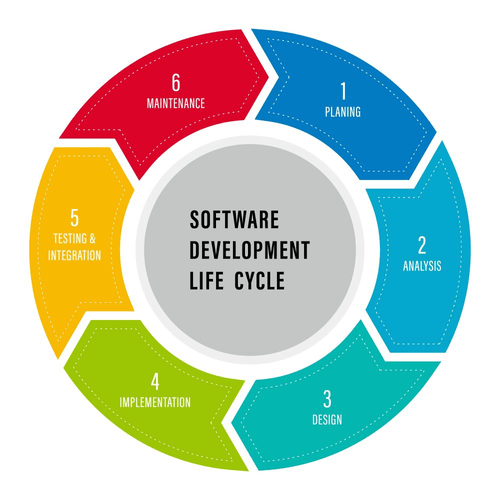However, the responsibility to manage the infrastructure also falls to the customer, creating a need for more employees with wider abilities and rising costs. A massive initial investment may also be required to buy the required hardware. Learn about managed providers, printers & copiers, business developments, and useful IT, cybersecurity, and tools tips proper from the specialists.
- Understanding the available cloud deployment models is essential to positioning your small business for achievement.
- A Private Cloud is a cloud deployment model where an organization builds, owns, and operates its knowledge centers for its needs.
- Perpetual or subscription license models are widespread, and clients are responsible for installing updates to make sure they’re operating the most recent version, which helps reduce publicity to safety points.
- Meanwhile, the Community Cloud mannequin is perfect for entities with comparable necessities and objectives.
The Split Feature Data Platform™ offers you the boldness to maneuver quick without breaking issues. Set up feature flags and safely deploy to manufacturing, controlling who sees which options and when. Connect each flag to contextual information, so you’ll find a way to know in case your features are making issues higher or worse and act with out hesitation.
What Is The Right Choice For Cloud Deployment Model?
IaaS platforms provide important scalability options, useful for businesses with variable workloads. This mannequin is a boon for small to medium-sized businesses that require sturdy infrastructure with out excessive costs. You’re answerable for the methods, the apps, and caring for your clients. Improving course of efficiency and accelerating your time-to-market with flexible, scalable computing assets delivered exactly when needed is crucial. However, the true crucial enterprise benefit is dependent upon how your small business makes use of the cloud. Large organizations with significant customization, safety, and compliance requirements usually select Private Clouds.
We analyze their distinctive characteristics, use cases, advantages, and challenges. The blog aims to supply readability on selecting the best mannequin to fulfill numerous business needs associated to price, scalability, security and more. Private cloud fashions are increasing in reputation, coming in second after public models. Today, 72% of businesses use a private cloud, both alone or as a part of a solution with one or more other cloud deployment models.

The group cloud is owned and managed by the organizations that use it, or by a third-party service supplier. The neighborhood cloud offers the advantages of each private and non-private clouds, together with scalability, flexibility, and safety. Community clouds are sometimes used by organizations that have strict regulatory requirements, similar to healthcare and government businesses. In a hybrid cloud structure, certain workloads and knowledge are hosted in private cloud infrastructure, whereas others are deployed in public cloud environments.
Understanding Cloud Deployment Models
Private clouds supply greater management, safety, and customization in comparison with public clouds. They’re especially suitable for organizations with strict security and compliance requirements or those handling sensitive data. A cloud deployment mannequin refers to the specific approach or technique an organization makes use of to deploy and handle its cloud computing services. The 5 main cloud deployment fashions are public cloud, non-public cloud, hybrid cloud, multicloud, and community cloud. The non-public cloud deployment mannequin is the precise opposite of the common public cloud deployment mannequin.

Consider components similar to knowledge sensitivity, compliance wants, and scalability necessities. Analyze the types of workloads your small business handles and their resource calls for. Users can simply entry the software program via an internet browser, making it a convenient choice for lots of companies. Email services, office instruments, and collaboration software are widespread examples of SaaS. Hybrid cloud solutions are often pushed by the need for digital transformation.
Key Issues For Selecting A Cloud Deployment Mannequin
They decide how functions, data, and different assets are delivered over the Internet. While evaluating the advantages and downsides of cloud deployment models is beneficial, you must consult with an experienced cloud solutions companion to find out particular wants. Multi-cloud can be commonly used by businesses with important workloads, corresponding to authorities businesses or monetary corporations.

Community clouds are shared by enterprises with widespread operational and regulatory concerns, corresponding to trade associations, non-profits, and government businesses. A group cloud is a suitable deployment choice for organizations that need an economical approach to collaborate on joint initiatives, applications, or research. Community clouds provide a cheaper different to personal clouds for the reason that operating and upkeep costs are divided among the cloud tenants.
They empower companies to innovate while maintaining control over critical belongings. To help you make an informed selection a bit simpler, our experts have compiled this neat comparison of essentially the most business-critical elements of the 4 cloud deployment fashions. Now that we’ve covered the fundamental cloud computing deployment fashions, it’s time to suppose about how you’re going to place it into use. In some other sector, a hybrid model selects the best elements of every conventional model and fuses them to improve performance, economic sustainability, flexibility, and extra.
Understanding these cloud deployment fashions is vital for leveraging their full potential. Choosing the right model is a strategic decision that impacts the effectivity and security of cloud operations. It offers the security of a non-public cloud with the cost-effectiveness of a public cloud. It provides scalability and efficiency, enabling businesses to concentrate on application growth quite than infrastructure administration. In this blog, we will delve into the varied cloud deployment models, exploring their unique traits and the way they cater to totally different organizational needs.
What Is The Cloud?
With the current shift to remote work front-of-mind within the enterprise world, those numbers aren’t quite so radical; extra businesses are utilizing cloud computing than ever before. The Edge Cloud model, despite its real-time capabilities, can face data privacy points. With information processed closer to the supply, ensuring privateness and security becomes crucial. Furthermore, managing and maintaining edge computing units scattered throughout numerous places may be difficult. The distinctive benefits of these models find applications in varied situations.
It’s a flexible selection amongst cloud deployment models, offering both scalability and security. Understanding the completely different cloud deployment fashions is turning into increasingly very important for businesses worldwide. These fashions define how cloud computing companies are structured and delivered, impacting every little thing from knowledge administration to utility development. As technology advances, the importance of these fashions in shaping our digital world grows exponentially.
These neighborhood, or multi-tenant, cloud models work best when each collaborating organization shares related requirements for safety, privacy, storage, and other efficiency aspects. In such instances, organizations can benefit from the effectivity of pooling assets under consistent parameters. Moreover, these fashions facilitate collaboration amongst companions, fostering enhanced project growth whereas distributing the prices and duties of implementation and maintenance.

We covered the different models – public, private, hybrid, and multi-cloud, and explored what to think about when making this significant selection. You’re free to mix and match providers, get diverse companies, and keep robust even in rough occasions. But, in fact the primary deployment models are, managing a number of clouds could be a challenge, with complexity, prices, and security to assume about. In a hybrid cloud setting, public and private clouds work harmoniously. Picture it as a cloud ecosystem where seamless integration and information circulate make issues dynamic and exciting.
Products & Providers
Public Cloud models usually involve third-party providers that host the infrastructure, software, and purposes in shared information facilities. These suppliers own, operate, and manage the hardware, reducing the on-premises equipment required. A cloud deployment mannequin is a important part that forms the backbone of modern IT infrastructure. A mannequin defines the cloud environment deployed, and there are primarily three types – Public, Private, and Hybrid Cloud. Before going further into each of these models, it’s important to know what makes them different. As flexible, scalable, and safe as hybrid cloud fashions may be, they are the most advantageous for businesses that would benefit from splitting data into delicate and non-sensitive categories.
This strategy is changing into increasingly more frequent in varied cloud deployment patterns. It permits businesses to leverage the best services from different cloud platforms. Before diving into the advantages and disadvantages of cloud deployment fashions, it’s essential to construct an understanding of what a cloud deployment mannequin is. PaaS, then again, presents a platform that features both infrastructure and growth tools for constructing, deploying, and managing purposes. With PaaS, companies now not have to manage the underlying infrastructure. Instead, the primary focus is on utility growth, with instruments and providers for coding, testing, and deployment.
Cloud Deployment Model #4 – Hybrid Cloud
In addition to choosing an appropriate cloud infrastructure in your organization, you also wants to ensure you’re choosing an skilled cloud companies provider. However, the tradeoff for cost-effectiveness is less autonomy, customization, and safety. Community cloud is a specialized form among various cloud deployment models. It is designed to serve a specific group of organizations with common objectives.
These regulated industries are often required to keep sure kinds of sensitive information on-premises whereas permitting less delicate knowledge to be stored within the cloud. With a hybrid cloud, companies have the flexibility of the public cloud for much less regulated duties and the safety of the personal cloud to ensure regulatory compliance. Let’s evaluation the different cloud deployment fashions to ensure you have the clarity wanted to benefit from the intensive benefits cloud computing provides. A digital personal cloud (or VPC) is a private cloud hosted in a public cloud. A VPC is usually used by an enterprise that wants flexible but secure entry to cloud storage, to host websites, or to execute code. By isolating resources and ring-fencing them from a bigger public cloud, VPCs get all the benefits of mainstream cloud infrastructure with the privacy and safety of personal cloud.